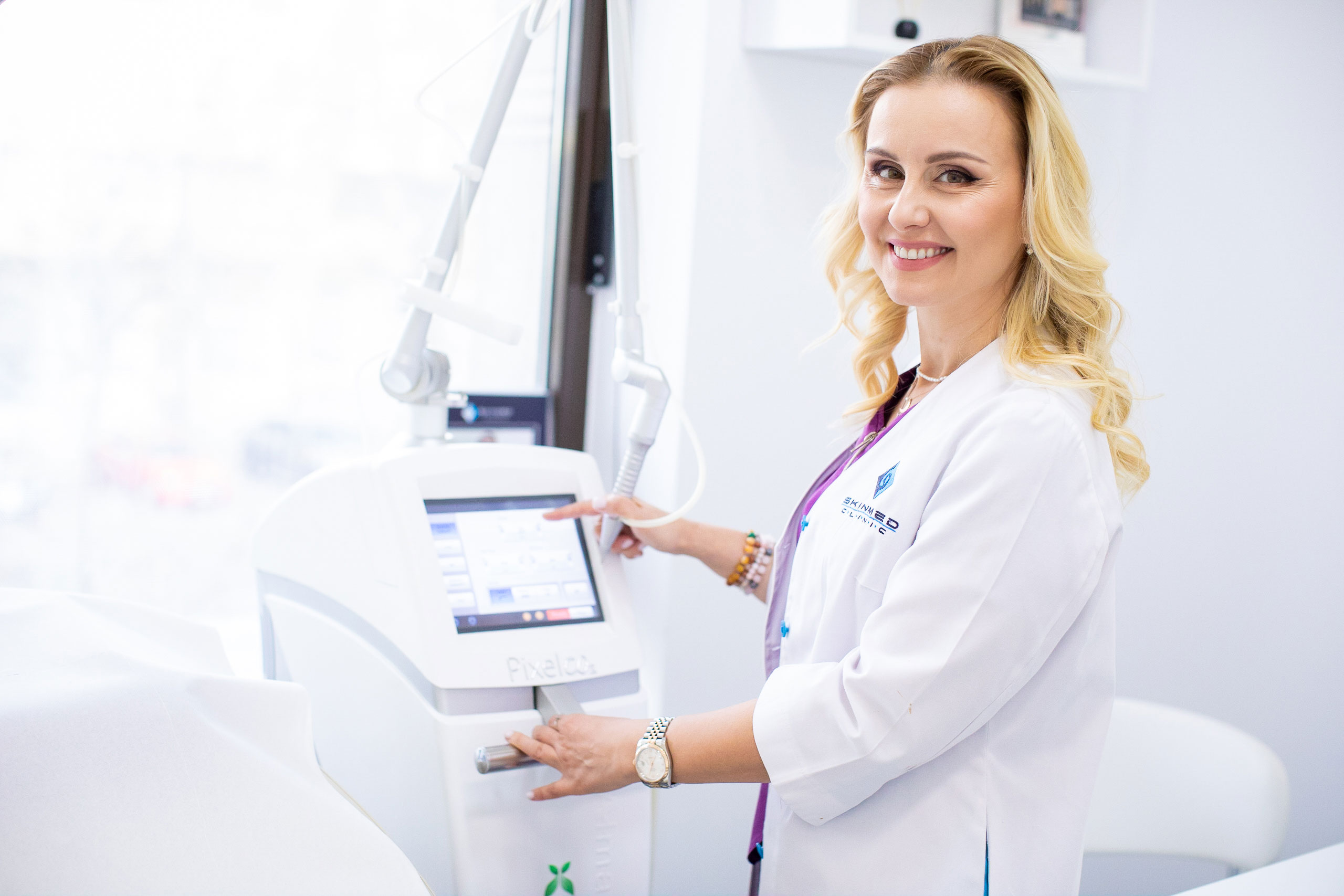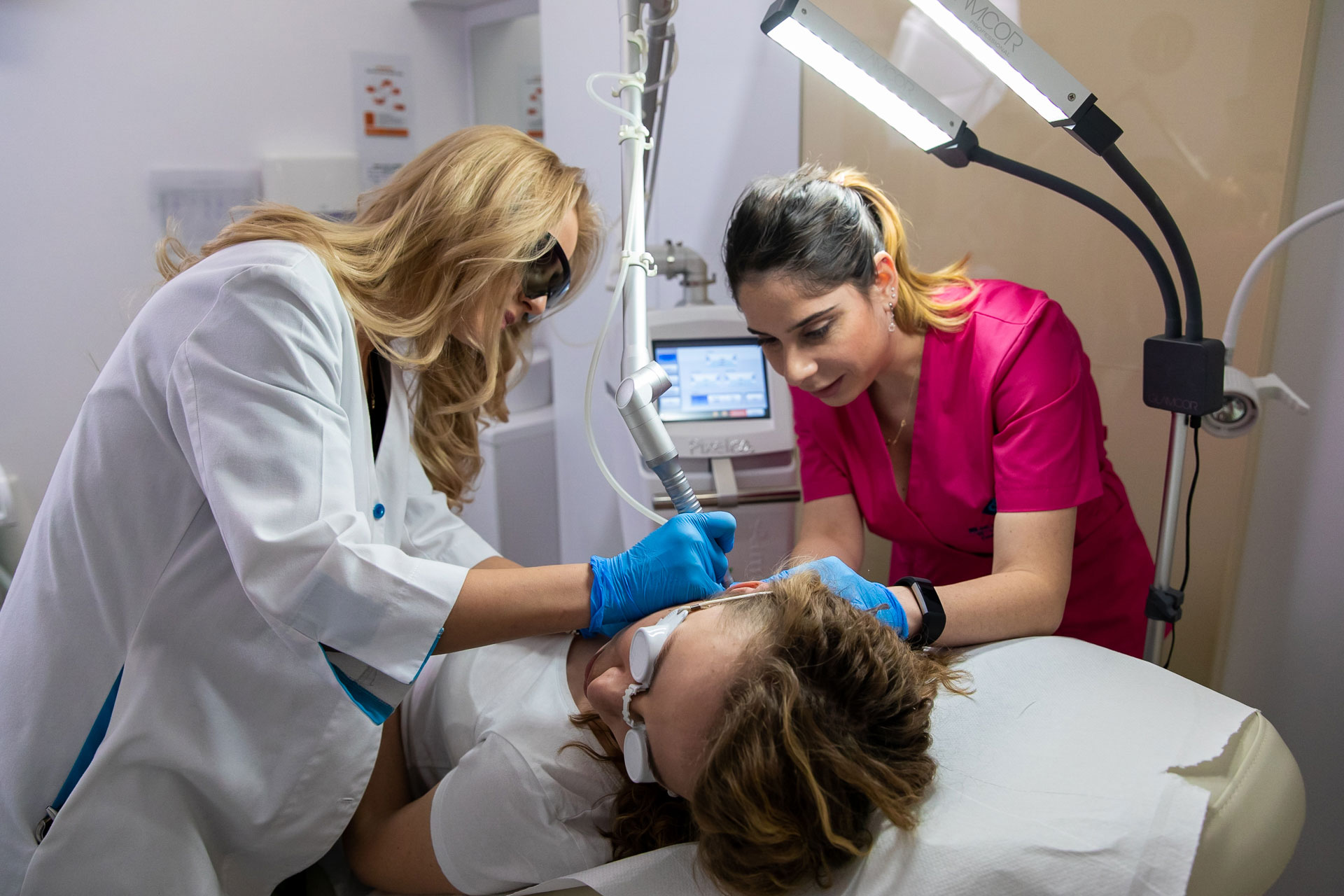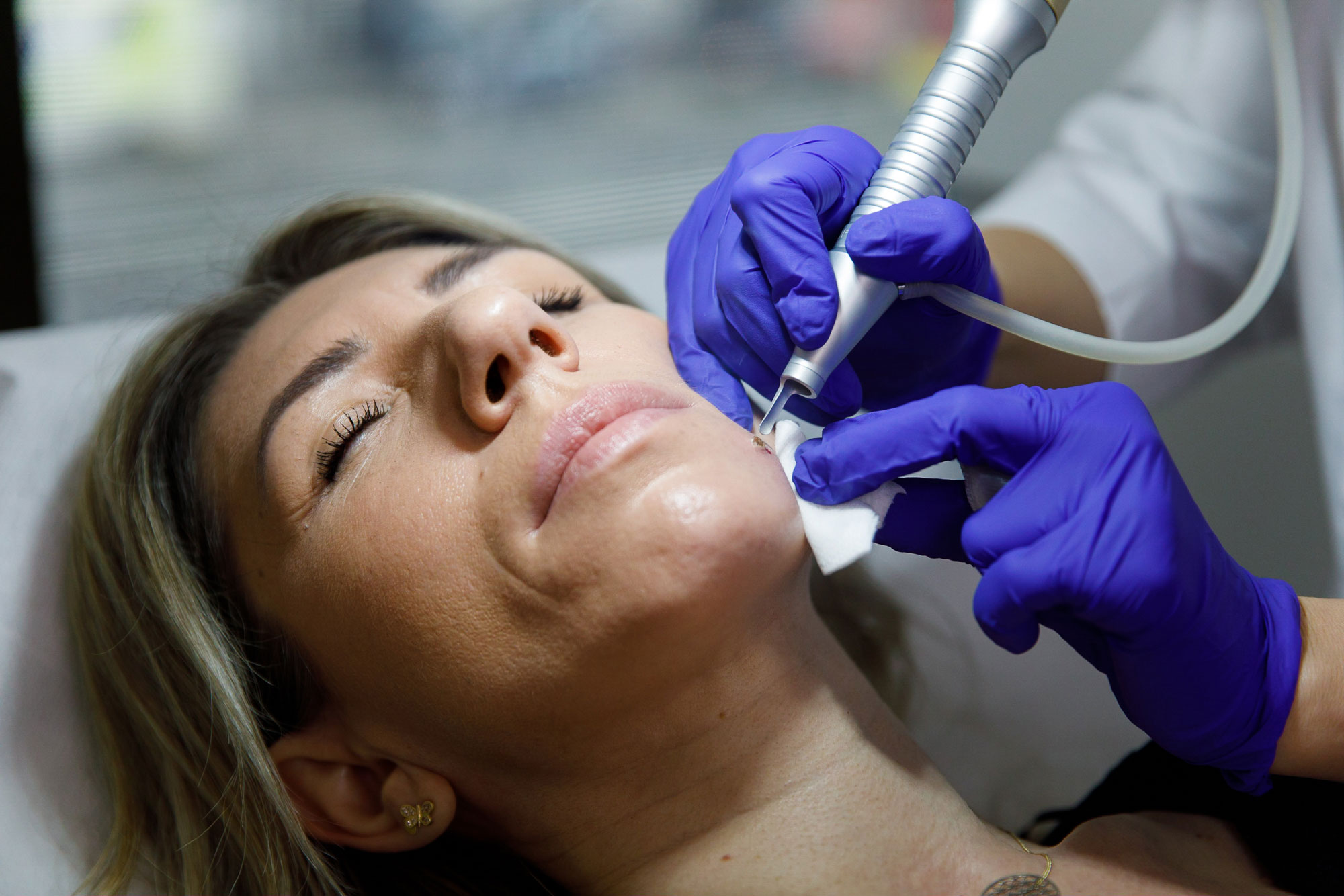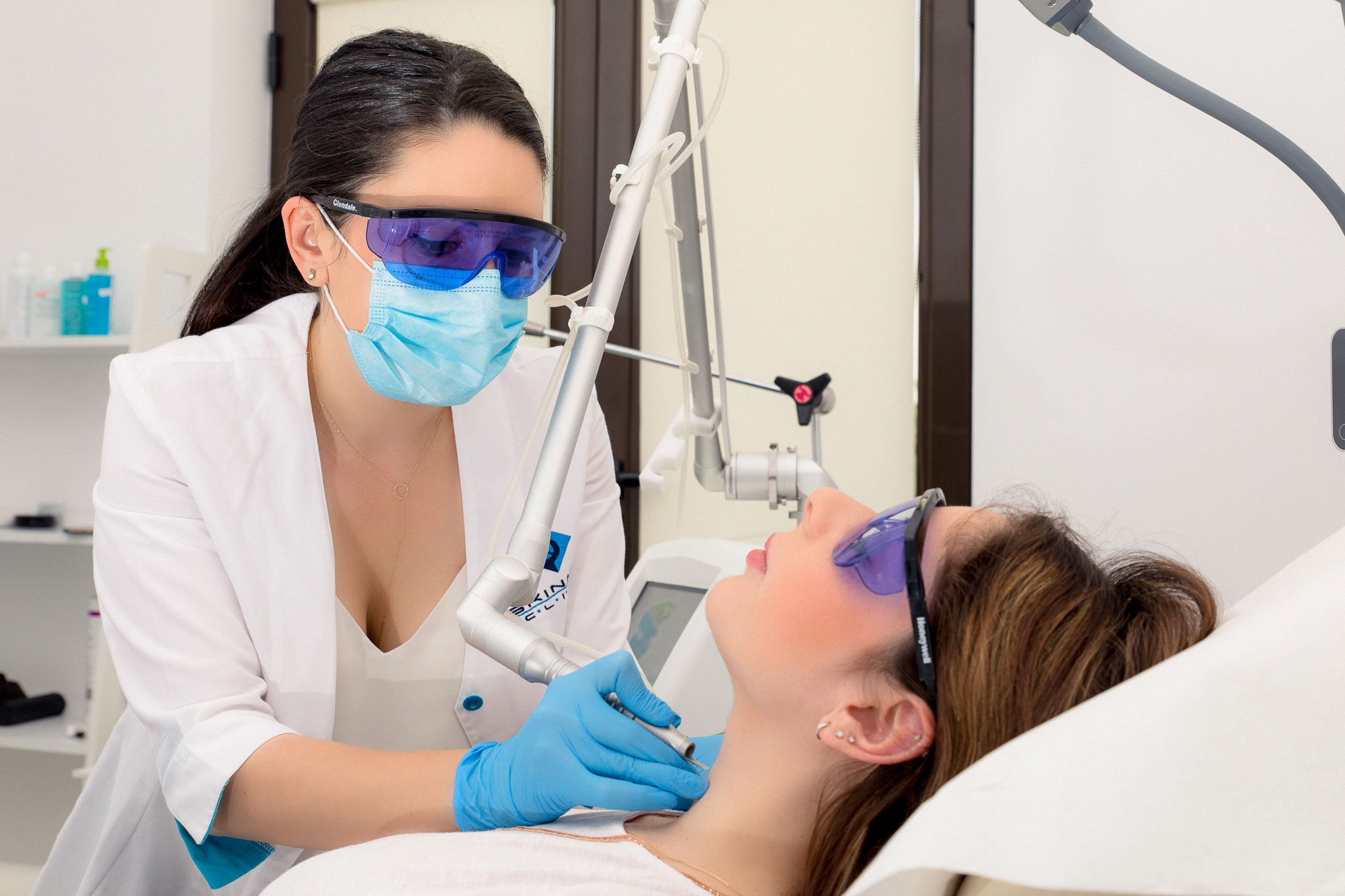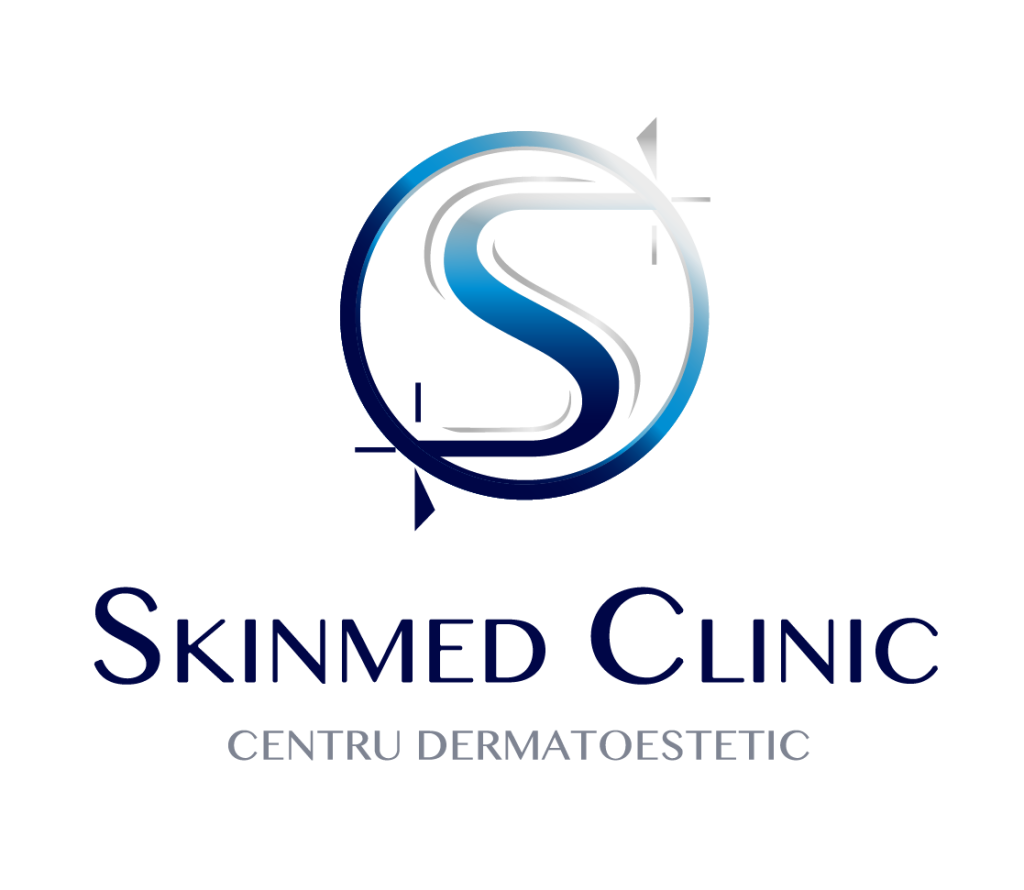CO₂ lasers have long been considered the industry gold standard for ablation. With Alma Lasers' CO₂ laser, used in SKINMED®, we can safely treat many cosmetic and medical skin problems.
CO₂ ablative laser
What is the ablative CO₂ laser?
The CO₂ laser is an extremely versatile device that can treat a variety of benign skin lesions. The CO₂ laser generates a 10600 nm infrared light wave. It emits high-energy pulses that remove the target tissue while simultaneously performing haemostasis, without injuring surrounding tissues. This results in a faster and more aesthetic healing without residual scarring.
The body's natural healing processes then replace the damaged skin with new, healthy tissue. Although there are several types of ablative lasers, differing mainly in wavelength, CO₂ lasers stand out because they offer an exceptional ratio of ablation to coagulation (heating tissue without evaporating it).
In SKINMED®, we use the CO₂ laser which belongs to the Alma Lasers portfolio, one of the leading providers of laser technologies.
Benefits of the CO₂ ablative laser
How does the CO₂ laser work?
The ablative CO₂ laser emits a wave of infrared light that is strongly absorbed by water. This makes it possible to remove tissue with very precise photocoagulation and very good aesthetic results.
This outpatient procedure generally takes between 30 minutes and 2 hours, depending on the problem being addressed and the area of skin being treated, and involves minimal discomfort.
The level of pain you experience will depend on the depth and extent of recovery at the surface and your own pain tolerance. You will receive a combination of local anaesthetic to prevent pain and to help you relax.
In what conditions is the CO₂ ablative laser useful?
In SKINMED®, we use the CO₂ laser for various treatments:
papilloma, wart, wart
more specifically papillomatous nevi, those raised moles that can be traumatised (hooked)
SKINMED experience and technology®,
for the best results!
Frequently asked questions
How do ablative lasers work?
Ablative lasers generate coherent beams of light that are absorbed by body tissue as energy.
Energy is delivered through a narrow wavelength range, and in the target area, the energy causes the temperature to rise, resulting in evaporation or tissue ablation. Ablative lasers effectively treat a wide range of skin conditions by removing all or part of the skin.
What do we need to know before starting treatment?
Before treatment begins, your skin will be thoroughly cleansed and you will receive special glasses to protect your eyes from the laser.
What happens during CO₂ treatment?
During the treatment, the dermatologist will slowly move the laser wand over the area of skin being treated. Finally, an antibacterial ointment and sometimes a non-stick dressing will be applied to the treated skin. You may need several treatment sessions, depending on the severity of your problem and the intensity of the laser used.
What are the results?
Removal of skin lesions with the CO₂ ablative laser is achieved without significant inflammation, rapid epithelialisation, scarring or residual lesions. Usually only one session is needed to treat the lesion to be removed, rarely more than one session is needed when discussing deeper lesions.
Is CO₂ ablative laser treatment painful?
No, the treatment is not painful. Depending on the size and number of lesions we want to treat, we can use either topical anaesthesia with cream or injectable anaesthesia with xylin.
Very small lesions can also be removed without anaesthesia, with the patient experiencing only minor discomfort during treatment.
Is there a recovery period? What are the post-procedure indications?
After the procedure, small healing scabs remain, which, depending on the area and the lesion that has been treated, fall off between 7-14 days. During this period, washing of the area is allowed and an antibiotic cream is used to prevent local over-infection. Afterwards, a healing cream may also be applied. It is usually recommended to avoid swimming pools, saunas, excessive sweating and excessive exposure to the sun for best aesthetic results.
Are there any contraindications for CO₂ ablative laser treatment?
CO₂ ablative therapy is contraindicated during pregnancy, in people with active skin infection in the area to be treated, people who are prone to develop keloid or hypertrophic scars, those who have undergone Isotretinoin treatment in the last 4-6 months, patients with connective tissue disease, on areas of chronic radiodermatitis.

